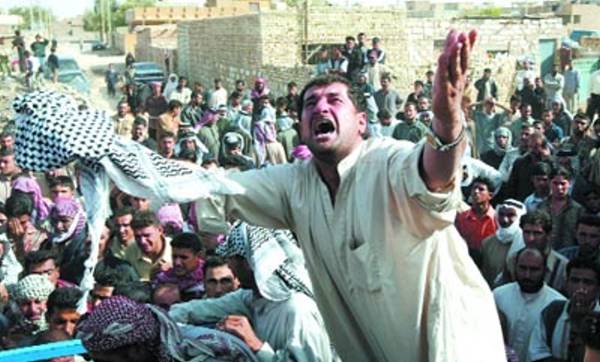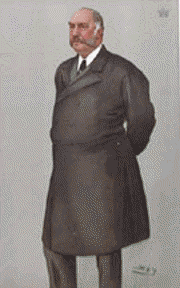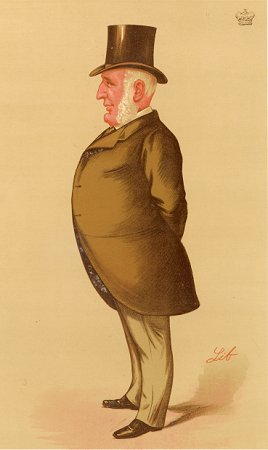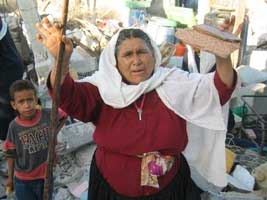
NOVEMBER 2005
AMMAN - A blast at the Radisson hotel in the Jordanian capital Amman on Wednesday was caused by a bomb placed in a false ceiling, police sources at the scene told Reuters.
(c) Reuters 2005. All rights reserved. Republication or redistribution of Reuters content, including by caching, framing or similar means, is expressly prohibited without the prior written consent of Reuters. Reuters and the Reuters sphere logo are registered trademarks and trademarks of the Reuters group of companies around the world. http://www.msnbc.msn.com/id/9980123/
|
What is at the core of
English "terror" laws then?:
Home Secretary Charles Clarke said he had not suspected until half an hour before the crucial vote that the government might lose.( Tony Blair defeated over police terror law)
But he said the prime minister had not been "foolhardy" in pressing for the 90-day plan - and the defeat would make him want to go on longer in the job rather than quit.
"He's feeling angry that this important proposal for the security of the nation was not carried by Parliament and cross at our failure, my failure, to actually get across to all of our parliamentarians the scale of the issues involved," he said.
And the idea that the defeat had weakened Mr Blair's position was "quite wrong" because the proposals were not "at the core" of the government's counter-terrorism plans, he added.

Iraqis
mourn in Nahrwan, near Baghdad, during the funeral of 11
members of a Kurdish Shiite family, who were killed
Saturday when gunmen sprayed their minibus with automatic
weapon fire (AP photo by Khalid Mohammed)
OPERATION STEEL CURTAIN IN IRAQ
Brig. Gen. Donald Alston told reporters Sunday that no US or Iraqi troops had been killed. He had no information about possible insurgent casualties in Husaybah, a poor mostly Sunni Arab town of 30,000 people some 200 miles northwest of Baghdad.
"We are having contact with the enemy, but we are not meeting stiff resistance," Alston said. "They are using small-arms fire." CNN said that during one 20-minute firefight in the town centre Saturday, insurgents fired at US Marines and Iraqi soldiers from inside a mosque. In the southwestern part of town, machinegun fire, tank cannons and AK-47 bullets reverberated during tough street-by-street combat, the network said.
The Times reported Sunday that coalition infantry forces supported by tanks and fighter jets dropping 500-pound bombs met more resistance than expected from insurgents in Husaybah and only managed to take control of several blocks by nightfall Saturday.
At least two US personnel were wounded by sporadic enemy fire down alleys as US-led forces advanced house by house, searching each one, the Times said.
"We met more resistance than I expected," Capt. Conlon Carabine of I Company in the 3rd Battalion, 6th Marine Regiment, told the newspaper.
Coalition troops sometimes found it hard to spot insurgents hiding in the town's 4,000 homes and called in support from Abrams tanks and fighter jets, the Times said.
The Marines discovered many families had fled Husaybah during the past several weeks, having been tipped off about the offensive or having assumed one was likely in the insurgent stronghold, the Times reported.
Ahmed Mukhlef, a 35-year-old schoolteacher in Husaybah, was one of those who fled Sunday morning.
"I left everything behind, my car, my house. My wife could only carry our one-year-old and three-year-old children," he said in the nearby town of Karabilah. "I don't care if my house is bombed or looted, as long as my wife and kids are safe." Mukhlef, who only managed to carry out several blankets, said the family heard only the sound of scattered gunfire as they left town.
Two Sunni Arab politicians in Baghdad sharply criticised the offensive.
Mohsen Abdul Hamid, head of the Iraqi Islamic Party, a moderate Sunni Arab bloc, issued a statement sharply criticising the offensive.
"We reject all military operations directed against civilian targets because such acts lead to the killing of innocent people and the destruction of towns and cities," he said.
Saleh Mutlaq, head of another Sunni faction, the National Dialogue Council, also objected to the operation.
"American forces accompanied by what is called the Iraqi army and national guard are conducting a destructive and killing operation of secure cities and villages on the pretext that they hide and secure terrorists," he said at a news conference in the capital.
The "Operation Steel Curtain" offensive is aimed at sealing off a main route for foreign fighters entering Iraq and was seen as a key to controlling the volatile Euphrates River valley of western Iraq and dislodging the insurgent group Al Qaeda in Iraq.
The US-led operation included about 1,000 Iraqi soldiers and will serve as a major test of the fledgling army's capability to battle insurgents — seen as essential to enabling Washington to draw down its 157,000-strong military presence.
EU
to investigate secret CIA jails
Staff and
agencies
Thursday November 3, 2005
The European commission is to investigate claims the CIA is holding al-Qaida captives at Soviet era compounds in eastern Europe. The detention centres are part of a global internment network that includes Guantánamo Bay, Cuba and the Bagram air base in Afghanistan, according to the Washington Post. The facilities - referred to as "black sites" in classified White House and CIA documents - allow the US agency to hold terror suspects for as long as it likes, but virtually nothing is known about who is kept in them. Poland and Romania are thought the most likely locations in Europe, according to the New York-based Human Rights Watch and Polish press reports.
If the reports are true, the secret jails would violate European human rights law prohibiting unlawful detention. A commission spokesman said it would informally question the 25 national governments on the claims. "We have to find out what is exactly happening. We have all heard about this, then we have to see if it is confirmed," he said. Hungary, Slovakia and Bulgaria have denied involvement. The Czech interior minister, Frantiszek Bublan, said the US had approached Prague to build a camp but the request was turned down. Bulgaria and Romania are scheduled to join the European Union in 2007 and are compelled to sign up to EU human rights standards. Eight other former Soviet bloc nations, including the Czech Republic and Poland, became members in May 2004. Eastern European Nato members have been some of Washington's staunchest allies in the "war on terror" and in Iraq.
The Washington Post said it knew the names of the European countries involved but was withholding them at the request of US officials, who argued disclosure could act as a spur to terrorist reprisals.
The exact location
of the facilities is known only to a handful of officials
in the US and the host countries. The internment network
as a whole has been kept almost entirely secret from the
US Congress, which is charged with overseeing the CIA's
covert actions. The report said the CIA was holding the
top 30 al-Qaida suspects at the secret facilities, where
they were kept in dark cells, sometimes underground, in
isolation from the outside world. They have no recognised
legal rights, and no one outside the CIA is allowed to
talk to them or see them. The covert prison system was
set up nearly four years ago in eight countries,
including a facility in Thailand that was closed down
after its existence was made public in 2003. Concerns
over the CIA's handling of prisoners escalated last week
after it emerged that the US vice-president, Dick Cheney,
and the agency's director, Porter Goss, asked Congress to
exempt the agency from legislation banning the cruel and
degrading treatment of prisoners. Sources told the
Washington Post that the process has caused considerable
internal debate within the CIA, where there is concern
about the legality, morality and practicality of the
system.
Today is the anniversary of the so
called Balfour's
Declaration



this declaration came about,
when , a Prime
Minister of the Greatest Colonial
Power promised
something called as a "home-land" to a
Multi-billionaire-feudal-capitalist-bank-magnate to be establish in , a third country which did not
belong to either of them
The first was called : Lord
Balfour the second
: Baron de Rothschild
the third was :Palestine as for the religion of the
second , it is irrelevant, to me. And the rest became
recent-history ...... of misery,
deprivation, annexation , occupation, expropriation, exploitation, starvation,
appropriation, expulsion,e exile, ethnic-cleansing, house demolition , indeterminate
incarceration , and huge encasement-walls. not to forget ,five wars ,
two Intifada , three million refugees and three millions occupied innocents. Beside and above all that , the perpetrators call themselves
: "the
Victims" and the the inventors and
promoters of this TRAGEDY are still
promising us : " A
just and lasting Peace " where the alien-Wolf
and the indigenous-Lamb could share the
same dinner table .
Raja Chemayel on Balfour's day , the
start of the Palestinian Holocaust !!
Ground-Imaging
Forensic Radar
Exam Of WWII Treblinka Camp
Institute
for Historical Review
IHR.org
5-15-2
At first the corpses were buried in pits, but afterwards they were burnt. Only a few hours passed between the arrival of a train-load by the branch line and their gassing. When asked during his later trial how many people could be murdered in one day, Franz Stangl, Commandant of Treblinka, answered: "Regarding
the question of the optimum amount of people
gassed in one day, I can state: according to my
estimation a transport of thirty freight cars
with 3,000 people was liquidated in three hours.
When the work lasted for about fourteen hours,
12,000 to 15,000 people were annihilated. There
were many days that the work lasted from the
early morning until the
evening . . . I have done
nothing to anybody that was not my duty. My
conscience is clear.' " |
- A detailed
forensic examination of the site of the wartime
Treblinka camp, using sophisticated electronic
ground radar, has found no evidence of mass
graves there.
For six days in October 1999, an Australian team headed by Richard Krege, a qualified electronics engineer, carried out an examination of the soil at the site of the former Treblinka II camp in Poland, where, Holocaust historians say, more than half a million Jews were put to death in gas chambers and then buried in mass graves.
According to the Encyclopedia of the Holocaust (1997), for example, "a total of 870,000 people" were killed and buried at Treblinka between July 1942 and April 1943. Then, between April and July 1943, the hundreds of thousands of corpses were allegedly dug up and burned in batches of 2,000 or 2,500 on large grids made of railway ties.
Krege's team used an $80,000 Ground Penetration Radar (GPR) device, which sends out vertical radar signals that are visible on a computer monitor. GPR detects any large-scale disturbances in the soil structure to a normal effective depth of four or five meters, and sometimes up to ten meters. (GPR devices are routinely used around the world by geologists, archeologists, and police.) In its Treblinka investigation, Krege's team also carried out visual soil inspections, and used an auger to take numerous soil core samples.
The team carefully examined the entire Treblinka II site, especially the alleged "mass graves" portion, and carried out control examinations of the surrounding area. They found no soil disturbance consistent with the burial of hundreds of thousands of bodies, or even evidence that the ground had ever been disturbed. In addition, Krege and his team found no evidence of individual graves, bone remains, human ashes, or wood ashes.
"From these scans we could clearly identify the largely undisturbed horizontal stratigraphic layering, better known as horizons, of the soil under the camp site," says the 30-year old Krege, who lives in Canberra. "We know from scans of grave sites, and other sites with known soil disturbances, such as quarries, when this natural layering is massively disrupted or missing altogether." Because normal geological processes are very slow acting, disruption of the soil structure would have been detectable even after 60 years, Krege noted.
While his initial investigation suggests that there were never any mass graves at the Treblinka camp site, Krege believes that further work is still called for.
"Historians say that the bodies were exhumed and cremated toward the end of the Treblinka camp's use in 1943, but we found no indication that any mass graves ever existed," he says. "Personally, I don't think there was a mass extermination camp there at all."
Krege prepared a detailed report on his Treblinka investigation. He says that he would welcome the formation, possibly under United Nations auspices, of an international team of neutral, qualified specialists, to carry out similar investigations at the sites of all the wartime German camps.
Krege and his team are associated with, and funded by, the Adelaide Institute, a south Australia revisionist "think tank." Its director, Dr. Fredrick Töben, was jailed in Germany for seven months in 1999 for disputing Holocaust extermination claims.
(Sources: "'Vernichtungslager' Treblinka: archaelogisch betrachtet," by Ing. Richard Krege, in Vierteljarhreshefte für freie Geschichtsforschung, June 2000 [4. Jg., Heft 1], pp. 62-64; "'No Jewish mass grave' in Poland," The Canberra Times, Jan. 24, 2000, p. 6; "Poland's Jews 'not buried at Treblinka'," The Examiner [Australia], Jan. 24, 2000. [The latter two newspaper items are reprinted in facsimile in VHO-info, May 2000, p. 30.]; Information provided by Richard Krege; M. Weber and A. Allen, "Treblinka," The Journal of Historical Review, Summer 1992, pp. 133-158; "German Court Sentences Australian Holocaust Skeptic," The Journal of Historical Review, July-August 1999, pp. 2-5; Y. Arad, "Treblinka," in I. Gutman, ed., Encyclopedia of the Holocaust [New York: 1997], pp. 1481-1488.) - http://www.ihr.org/graphics/IHRlogos.gif
